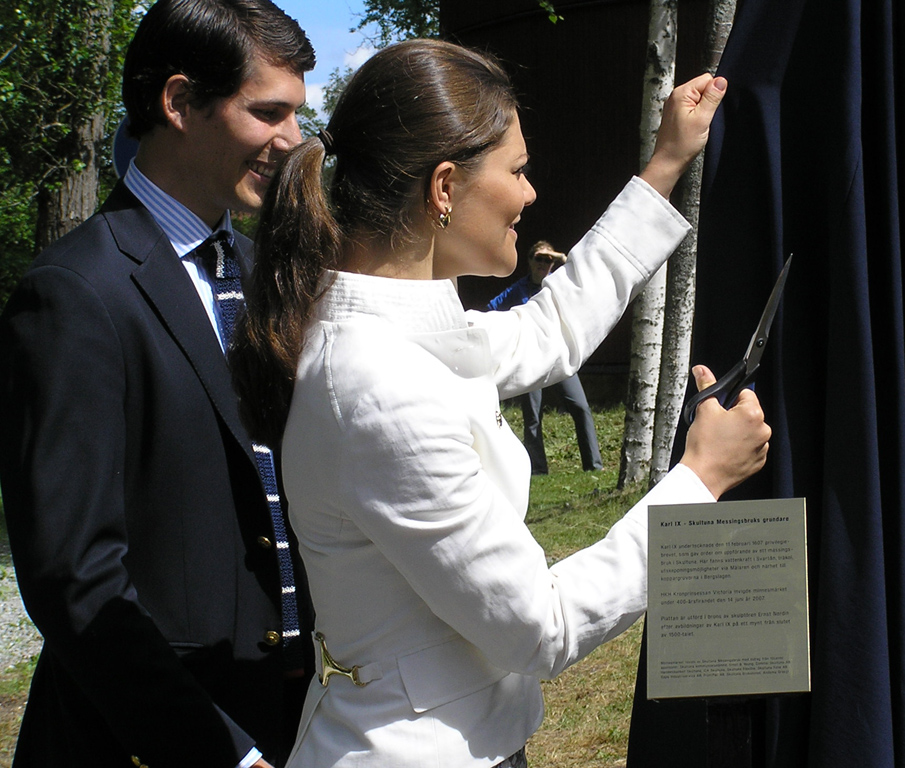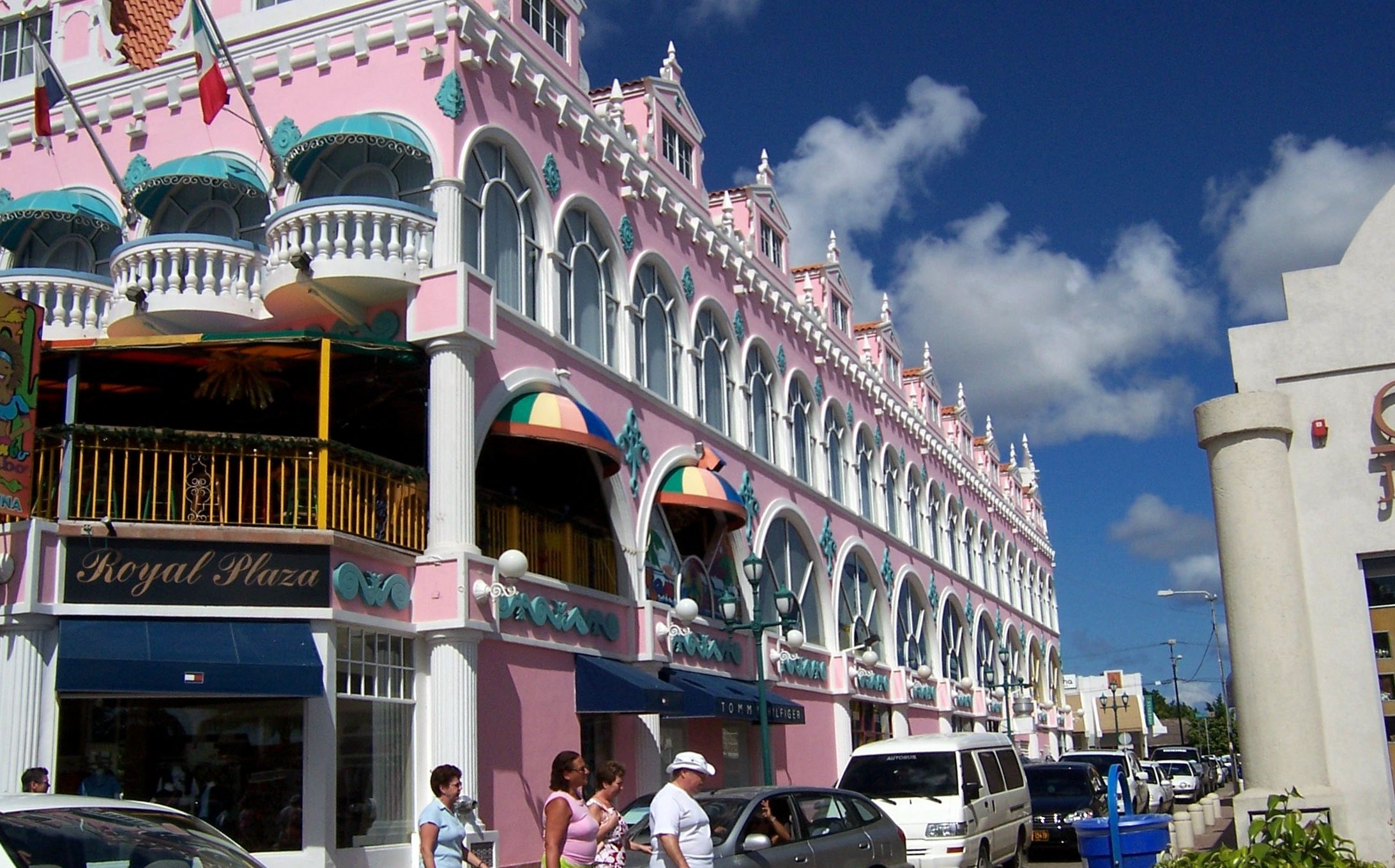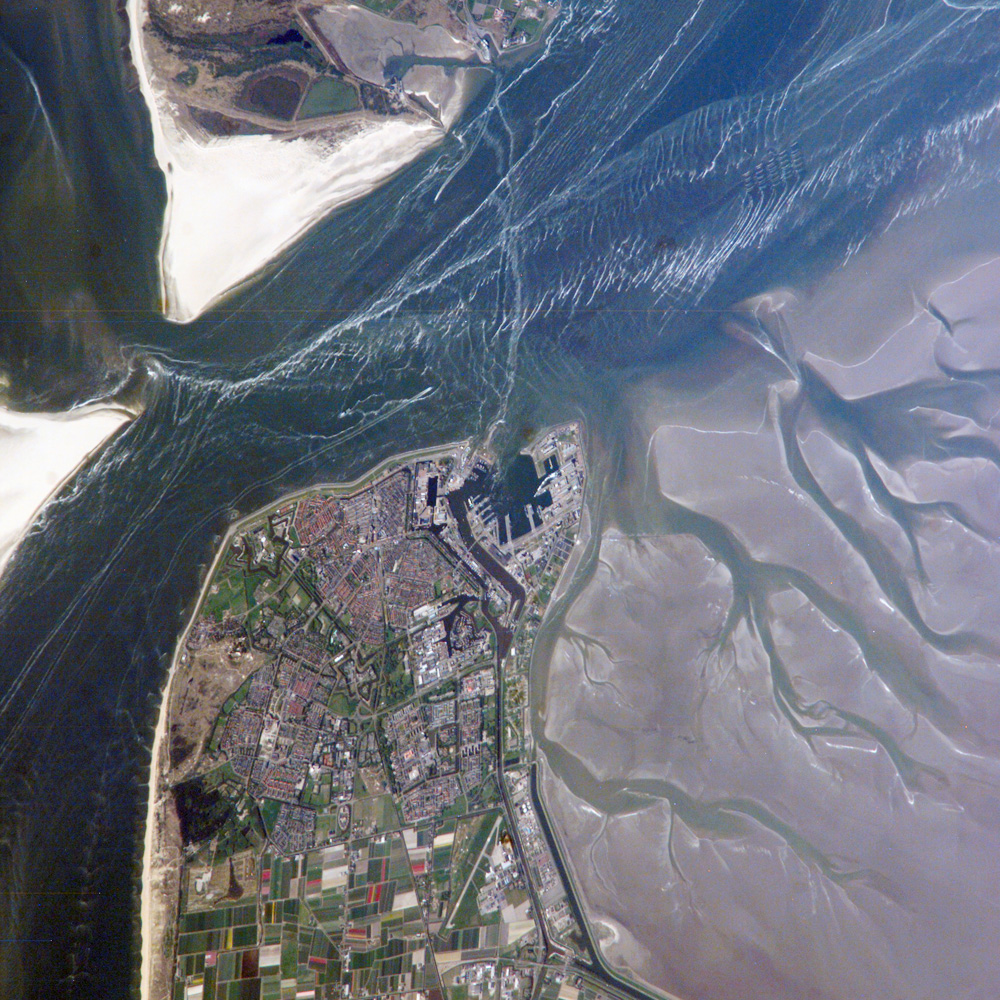|
Catharina-Amalia, Princess Of Orange
Catharina-Amalia, Princess of Orange (Catharina-Amalia Beatrix Carmen Victoria; born 7 December 2003) is the heir apparent to the throne of the Kingdom of the Netherlands, which consists of the constituent countries of Aruba, Curaçao, the Netherlands, and Sint Maarten. Catharina-Amalia is the eldest child of King Willem-Alexander and Queen Máxima of the Netherlands. She became heir apparent to the Dutch throne when her father ascended the throne on 30 April 2013. Birth Princess Catharina-Amalia Beatrix Carmen Victoria was born at 17:01 CET on 7 December 2003 in the HMC Bronovo in The Hague, the first child of the then Prince Willem-Alexander (now king) and Princess Máxima. Upon the public announcement of her birth, 101 salute shots were fired at four places in the Kingdom of the Netherlands: Den Helder and The Hague in the Netherlands, Willemstad in Curacao, and Oranjestad in Aruba. On 12 June 2004, Catharina-Amalia was baptised by the Rev. Carel ter Linden in ... [...More Info...] [...Related Items...] OR: [Wikipedia] [Google] [Baidu] |
Princess Of Orange
Prince of Orange (or Princess of Orange if the holder is female) is a title originally associated with the sovereign Principality of Orange, in what is now southern France and subsequently held by sovereigns in the Netherlands. The title "Prince of Orange" was created in 1163 by the Emperor Frederick Barbarossa, by elevating the county of Orange to a principality, in order to bolster his support in that area in his conflict with the Papacy. The title and land passed to the French noble houses House of Baux, of Baux, in 1173, and House of Chalon-Arlay, of Chalons, in 1393, before arriving with René of Chalon, Rene of Nassau in 1530. The principality then passed to a Dutch nobleman, Rene's cousin William the Silent, William (known as "the Silent"), in 1544. In 1702, after William the Silent's great-grandson William III of England died without children, a dispute arose between his cousins, John William Friso, Prince of Orange, Johan Willem Friso and Frederick I of Prussia. I ... [...More Info...] [...Related Items...] OR: [Wikipedia] [Google] [Baidu] |
Inauguration Of Willem-Alexander
The inauguration of Willem-Alexander took place on 30 April 2013 at the Nieuwe Kerk in Amsterdam. Willem-Alexander ascended the throne immediately following the abdication of his mother Queen Beatrix earlier that day. Willem-Alexander is the first King of the Netherlands since the death of his great-great-grandfather William III in 1890. Background Following a reign of 33 years which began with the abdication of her mother Queen Juliana in 1980, Queen Beatrix, in a televised speech to the nation on 28 January 2013, announced her intent to abdicate the throne in favour of her eldest child, Willem-Alexander, in accordance with the tradition of Dutch monarchs. On 17 April 2013, Willem-Alexander revealed in an interview that Queen Beatrix had previously informed the Prime Minister of her intention to abdicate the throne, which initiated talks on how and when to do this. Preparations Preparations for this special session of the States General were made by officials of the Senate ... [...More Info...] [...Related Items...] OR: [Wikipedia] [Google] [Baidu] |
Victoria, Crown Princess Of Sweden
Victoria, Crown Princess of Sweden, Duchess of Västergötland (Victoria Ingrid Alice Désirée; born 14 July 1977) is the heir apparent to the Swedish throne, as the eldest child of King Carl XVI Gustaf. If she ascends to the throne as expected, she would be Sweden's fourth queen regnant (after Margaret, Christina and Ulrika Eleonora) and the first since 1720. Her inheritance is secured by Sweden's 1979 Act of Succession, the first law in Western Europe to adopt royal absolute primogeniture. Early life Victoria was born on 14 July 1977 at 21:45 CET at the Karolinska Hospital in Solna, Stockholm County, Sweden, and is the oldest child of King Carl XVI Gustaf and Queen Silvia. She is a member of the House of Bernadotte. Born as a princess of Sweden, she was designated crown princess in 1979 ( SFS 1979:932) ahead of her younger brother. Her place as first in the line of succession formally went into effect on 1 January 1980 with the parliamentary change to the Act of Success ... [...More Info...] [...Related Items...] OR: [Wikipedia] [Google] [Baidu] |
Prince Constantijn Of The Netherlands
Prince Constantijn of the Netherlands (''Constantijn Christof Frederik Aschwin''; born 11 October 1969) is the third and youngest son of the former Dutch queen, Beatrix, and her husband, Claus von Amsberg, and is the younger brother of the reigning Dutch king, Willem-Alexander. He is a member of the Dutch Royal House and currently fourth in the line of succession to the Dutch throne. Life and career Prince Constantijn was born on 11 October 1969 at Utrecht University Hospital (now the University Medical Center Utrecht) in Utrecht, following the births of his brothers, Willem-Alexander (born in 1967), and Johan Friso (1968–2013). He goes by the nickname ''Tijn''. His godparents are former King Constantine II of Greece, Prince Aschwin of Lippe-Biesterfeld, Axel Freiherr von dem Bussche-Streithorst, Max Kohnstamm, and Corinne de Beaufort-Sickinghe. Prince Constantijn studied law at Leiden University, becoming a lawyer, and then worked at the Brussels department of the (Dutch ... [...More Info...] [...Related Items...] OR: [Wikipedia] [Google] [Baidu] |
Grote Of Sint-Jacobskerk (The Hague)
The Great Church or St. James' Church (in Dutch, ''Grote Kerk'' or ''Sint-Jacobskerk'', ) is a landmark Protestant church in The Hague, Netherlands. The building is located on the Torenstraat, named for its high tower. Together with the Binnenhof, it is one of the oldest buildings in The Hague. Members of the House of Orange-Nassau have been baptised and married there. The latest are Willem-Alexander of the Netherlands and his daughter Catharina-Amalia, Princess of Orange. History The Great, or St. James' Church, was founded in the late 13th century, probably as a wooden church. The present church was built in stages, between the 14th and 16th century. First in the year 1337 sources speak of the “great church” (Dutch: ''grote kercke''), which is a typical historical indication of a brick structure. It has a fine vaulted interior, and contains some old stained glass, a carved wooden pulpit (1550), a large organ and interesting sepulchral monuments, and 34 escutcheons of the k ... [...More Info...] [...Related Items...] OR: [Wikipedia] [Google] [Baidu] |
Baptised
Baptism (from grc-x-koine, βάπτισμα, váptisma) is a form of ritual purification—a characteristic of many religions throughout time and geography. In Christianity, it is a Christian sacrament of initiation and adoption, almost invariably with the use of water. It may be performed by sprinkling or pouring water on the head, or by immersing in water either partially or completely, traditionally three times, once for each person of the Trinity. The synoptic gospels recount that John the Baptist baptised Jesus. Baptism is considered a sacrament in most churches, and as an ordinance in others. Baptism according to the Trinitarian formula, which is done in most mainstream Christian denominations, is seen as being a basis for Christian ecumenism, the concept of unity amongst Christians. Baptism is also called christening, although some reserve the word "christening" for the Infant baptism, baptism of infants. In certain Christian denominations, such as the Lutheran Chu ... [...More Info...] [...Related Items...] OR: [Wikipedia] [Google] [Baidu] |
Oranjestad, Aruba
Oranjestad ( , , ; literally "Orange City") is the capital and largest city of Aruba, a constituent country of the Kingdom of the Netherlands. It is located on the southern coast near the western end of the island country. In the local language, Papiamento, Oranjestad is often referred to as "Playa". In 2010, the population of the capital was 28,294. History The town was built around Fort Zoutman shortly after it was built in 1796. Initially, the town had no official name, being known only as the town on the Bay of Horses (''Paardenbaai'' in Dutch), a place from which horses were raised and exported to neighbouring Curaçao and Jamaica. In the early 19th century, Oranjestad was like a village, because Aruba had no large plantations or international traders. The total population of the island in 1816 was estimated at 1,732 most of whom were farmers. Fort Zoutman was the main building around which 200 small houses had been erected. The town had two churches: one Catholic and one P ... [...More Info...] [...Related Items...] OR: [Wikipedia] [Google] [Baidu] |
Willemstad
Willemstad ( , ; ; en, William I of the Netherlands, William Town, italic=yes) is the capital city of Curaçao, an island in the southern Caribbean Sea that forms a Countries of the Kingdom of the Netherlands, constituent country of the Kingdom of the Netherlands. It was the capital of the Netherlands Antilles prior to its Dissolution of the Netherlands Antilles, dissolution in 2010. The historic centre of the city consists of four quarters: the Punda and Otrobanda, which are separated by the Sint Anna Bay, an inlet that leads into the large natural harbour called the Schottegat, as well as the Scharloo and Pietermaai Smal quarters, which are across from each other on the smaller Waaigat harbour. Willemstad is home to the Curaçao synagogue, the oldest surviving synagogue in the Americas. The city centre, with its unique architecture and harbour entry, has been designated a UNESCO World Heritage Site. History Punda was established in 1634, when the Dutch captured the island fro ... [...More Info...] [...Related Items...] OR: [Wikipedia] [Google] [Baidu] |
Den Helder
Den Helder () is a municipality and a city in the Netherlands, in the province of North Holland. Den Helder occupies the northernmost point of the North Holland peninsula. It is home to the country's main naval base. From here the Royal TESO ferryboat service operates the transportation link between Den Helder and the nearby Dutch Wadden island of Texel to the north. Etymology Before the year 1928 the official name of Den Helder was Helder. The origin of the name Helder is not entirely clear. The name Helder may have come from ''Helle/Helde'', which means "hill" or "hilly grounds", or from ''Helre'', which means a sandy ridge. Another explanation is that the name derived from ''Helsdeur'' (Hell's Door), likely because in the water between Den Helder and Texel (called Marsdiep) the current was so strong that many ships were lost. History Huisduinen was the original older part of the city, whereas Helder itself was a nearby smaller hamlet. When a harbour was built near Hel ... [...More Info...] [...Related Items...] OR: [Wikipedia] [Google] [Baidu] |
Kingdom Of The Netherlands
, national_anthem = ) , image_map = Kingdom of the Netherlands (orthographic projection).svg , map_width = 250px , image_map2 = File:KonDerNed-10-10-10.png , map_caption2 = Map of the four constituent countries shown to scale , capital = Amsterdam , largest_city = capital , coordinates = , admin_center = The Hague , admin_center_type = Government seat , official_languages = Dutch , languages_type = Official regional languages , languages = , languages2_type = Recognised languages , languages2 = , demonym = Dutch , membership = , membership_type = Countries , government_type = Devolved unitary parliamentary constitutional monarchy , leader_title1 = Monarch , leader_name1 = Willem-Alexander , leader_title2 = Chairman of the Council of Ministers) when he acts as a Minister of the Kingdom. An example of this can be found in article 2(3a) of thAct on financial supervision for Curaçao and Sint Maarten Other ministers of the Netherlands are referred to w ... [...More Info...] [...Related Items...] OR: [Wikipedia] [Google] [Baidu] |
21-gun Salute
A 21-gun salute is the most commonly recognized of the customary gun salutes that are performed by the firing of cannons or artillery as a military honor. As naval customs evolved, 21 guns came to be fired for heads of state, or in exceptional circumstances for heads of government, with the number decreasing with the rank of the recipient of the honor. While the 21-gun salute is the most commonly recognized, the number of rounds fired in any given salute will vary depending on the conditions. Circumstances affecting these variations include the particular occasion and, in the case of military and state funerals, the branch of service, and rank (or office) of the person to whom honors are being rendered. History The custom stems from naval tradition in the sixteenth century, when a warship entering a foreign port would fire each of its cannons while still out of range of targets. Since cannons then required a considerable time to reload, the ship was effectively disarmed, sig ... [...More Info...] [...Related Items...] OR: [Wikipedia] [Google] [Baidu] |





.jpg)

.jpg)